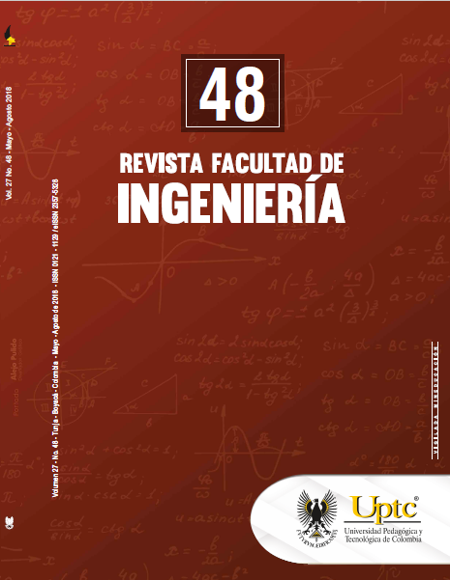Manufacture of titanium dioxide scaffolds for medical applications

Abstract
The skeletal system is vulnerable to injuries and bone loss over the years, making the use of autologous or allogeneic implants necessary. However, these implants have complications, such as the limited amount of bone to be extracted and the cell death at the extraction site; hence, biomaterials have been developed as platforms for cell growth (scaffolds). Biomaterials and bones have similar properties that facilitate the integration between the material and the bone tissue, helping the tissue to regenerate. Traditional ceramic implants are hydroxyapatite, but given their low mechanical properties, they have been replaced with better inert ceramics. Therefore, this study aims at manufacturing titanium dioxide scaffolds through various techniques, using collagen, polyvinyl alcohol (PVA), sodium chloride, and corn flour as binders to influence pore size. Scaffolds were characterized by a Scanning Electron Microscope (SEM) and evaluated by compression and degradability tests in a Simulated Body Fluid (SBF). The prepared scaffolds had mechanical behaviors with ranges within the bone parameters; among them, the scaffold obtained by infiltration with 10% PVA presented values of compression strength (6.75 MPa), elastic modulus (0.23 GPa), and porosities (54-67%) closer to the values of the trabecular bone.Keywords
compression molding, infiltration, lyophilization, scaffolds
References
- A. L. Pérez, V. V. Ortega, L. Meseguer, M. A. Baños, P. Sepúlveda, and M. C. Sanz, “Implante óseo de la espuma de hidroxiapatita. Estudio experimental en conejos,” Rev Esp. Patol., vol. 38 (2), pp. 14-20, Jan. 2005.
- J. Park, and R. Lakes, Biomaterials: An Introduction. 3ra ed. USA: Springer, 2007.
- J. I. González, D. M. Escobar, and C. P. Ossa, “Influence of the Type of Manufacturing Technique on the Porosity and Interconnectivity of Hydroxyapatite Scaffolds,” Int. J. of Mat. Eng. Innovation, vol. 7 (2), pp. 104-114, Dec. 2016. DOI: http://doi.org/10.1504/IJMATEI.2016.079554. DOI: https://doi.org/10.1504/IJMATEI.2016.079554
- J. Liu, and X. Miao, “Porous alumina ceramics prepared by slurry infiltration of expanded polystyrene beads,” J. of Mat Sc., vol. 40 (23), pp. 6145-6150, Dec. 2005. DOI: http://doi.org/10.1007/s10853-005-3165-3. DOI: https://doi.org/10.1007/s10853-005-3165-3
- T. Yang, J. M. Lee, S. Y. Yoon, and H. C. Park, “Hydroxyapatite scaffolds processed using a TBA-based freeze-gel casting/polymer sponge technique,” J. Mater Sci. Mater. Med., vol. 21 (5), pp. 1495-1502, May. 2010. DOI: http://doi.org/10.1007/s10856-010-4000-1. DOI: https://doi.org/10.1007/s10856-010-4000-1
- H. R. Ramay, and M. Zhang, “Preparation of porous hydroxyapatite scaffolds by combination of the gel-casting and polymer sponge methods,” Biomaterials, vol. 24 (19), pp. 3293-3302, Aug. 2003. DOI: http://doi.org/10.1016/S0142-9612(03)00171-6. DOI: https://doi.org/10.1016/S0142-9612(03)00171-6
- E. Saiz, L. Gremillard, G. Menendez, K. Miranda, P. Gryn, and A. P. Tomsia, “Preparation of porous hydroxyapatite scaffolds,” Mat. Sc. and Eng: C, vol. 27 (3), pp. 546-555, Apr. 2007. DOI: http://doi.org/10.1016/j.msec.2006.05.038. DOI: https://doi.org/10.1016/j.msec.2006.05.038
- S. Deville, E. Saiz, and A. P. Tomsia, “Freeze casting of hydroxyapatite scaffolds for bone tissue engineering,” Biomaterials, vol. 27 (32), pp. 5480-5489. Nov. 2006. DOI: http://doi.org/10.1016/j.biomaterials.2006.06.028. DOI: https://doi.org/10.1016/j.biomaterials.2006.06.028
- J. I. González, D. M Escobar, and C. P. Ossa, “Métodos de fabricación de cuerpos porosos de hidroxiapatita, revisión del estado del arte,” Rev. ION, vol. 27 (2), pp. 55-70. Dec. 2014.
- J. I. González, D. M. Escobar, and C. P Ossa, “Porous bodies of hydroxyapatite produced by a combination of the gel-casting and polymer sponge methods,” J. of Adv Res, vol. 7 (2), pp. 297-304, Mar. 2016. DOI: http://doi.org/10.1016/j.jare.2015.06.006. DOI: https://doi.org/10.1016/j.jare.2015.06.006
Downloads
Download data is not yet available.